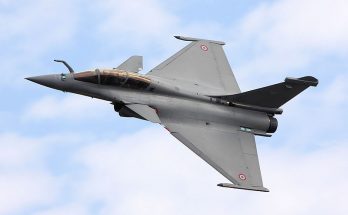
The Russian defense industry can develop a ground-based version of the Kalibr cruise missile by the end of 2019, a source told TASS Russian News Agency.
TASS’ source in the missile-building industry said, “The land-based Kalibr system with the cruise missile can be developed and prepared for its serial production by the end of this year. In order to use this missile in its land-based version, it is only necessary to make changes to its control system and replace the software.”
Given that the Kalibr is operational on Russian naval vessels, Russian officials are confident that a ground-based variant – with an expected range of 2,600 kilometers – can enter service rapidly. Earlier this month, Russian Defense Minister Sergei Shoigu outlined plans for such a system to be developed in the 2019-2020 timeframe.
The decision to put a ground-based Kalibr into service follows the withdrawal of the U.S. and Russia from the Intermediate-Range Nuclear Forces Treaty, which prohibited the two sides from developing ballistic and cruise missiles with ranges between 500 kilometers and 5,500 kilometers. In 2014, the U.S. began publicly accusing Russia of violating the treaty, citing missile tests that Washington alleges indicated an interest on the Russian side in putting a banned missile into service.
Moscow has denied the American claims and accused the U.S. of violating the treaty with the deployment of Mk 41 launchers in Europe.
The two countries have held continuous dialogue over the alleged violations, without making much ground. In December 2018, the U.S. announced that it would give Russia two months to return to compliance with the INF Treaty, after which the U.S. would begin the formal withdrawal process from the treaty.
Speaking to reporters on February 7, 2019, Russian Deputy Foreign Minister Sergei Ryabkov indicated that Russia remains open to negotiations on returning to the INF or reaching a successor treaty. He said, “We have certainly seen the U.S. president’s statement on the possibility of concluding a new treaty, which could be signed in a beautiful room, and the document should involve other countries as participants.”
Deputy Foreign Minister Ryabkov was referencing a statement from U.S. President Donald Trump earlier in February, in which he said, “I hope that we’re able to get everybody in a big and beautiful room and do a new treaty that would be much better. Certainly, I would like to see that.” TASS, which reported the deputy foreign minister’s comments, did not indicate whether he further specified which countries should be included as participants. Belarus, Kazakhstan, and Ukraine are party to the INF Treaty. Members of the EU, as well as China, are not part of the treaty.
Military markets analyst, covering Eurasia, Middle East, and Africa.




